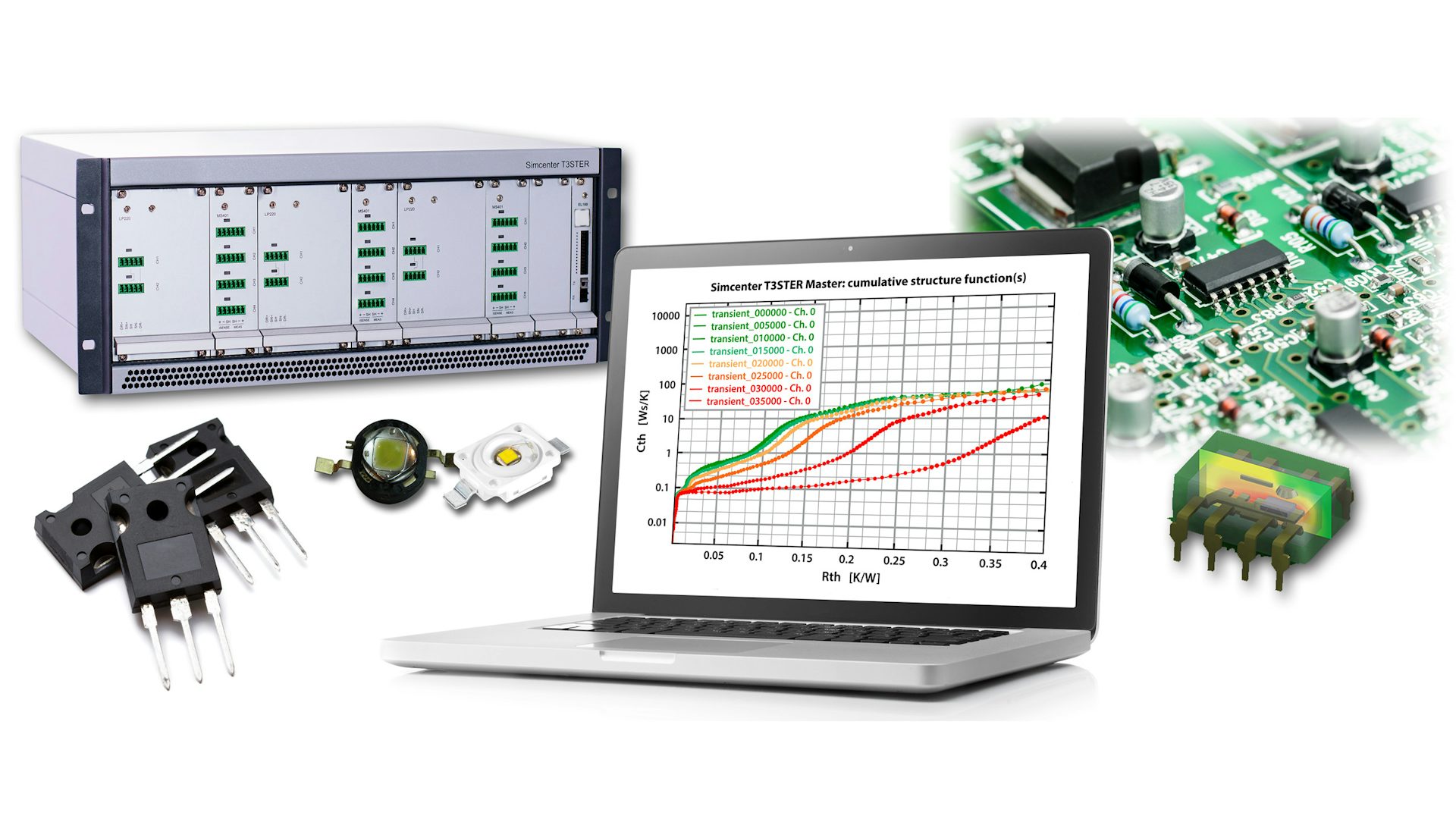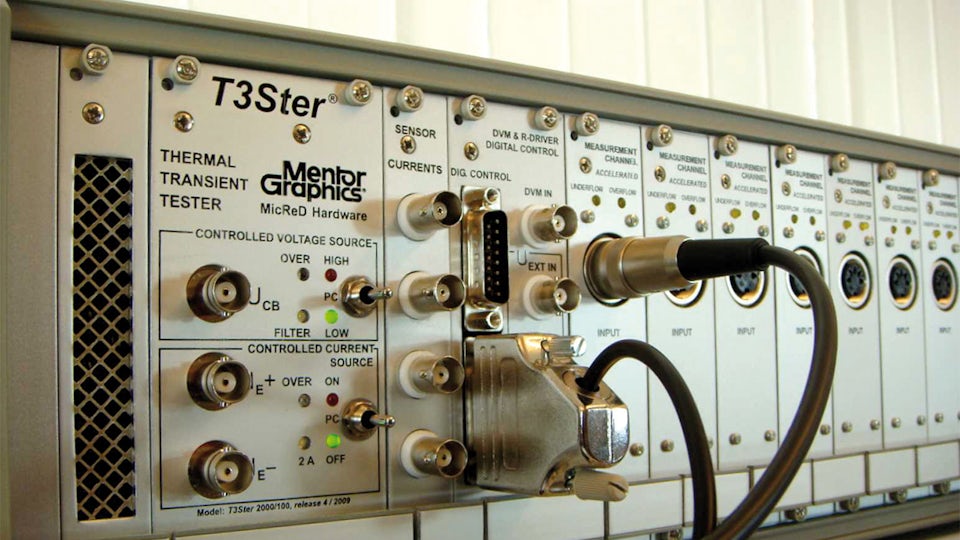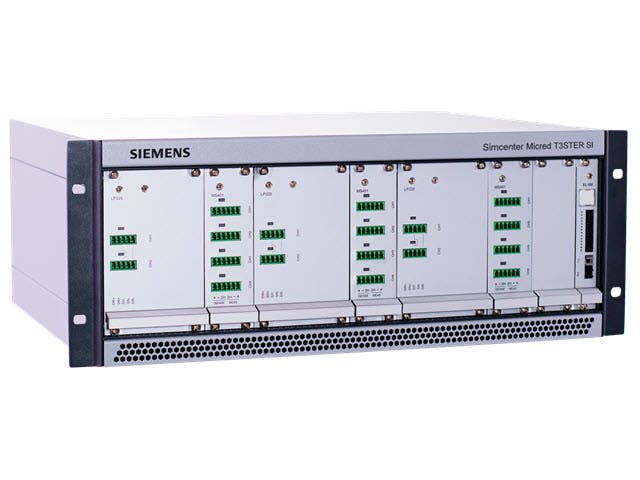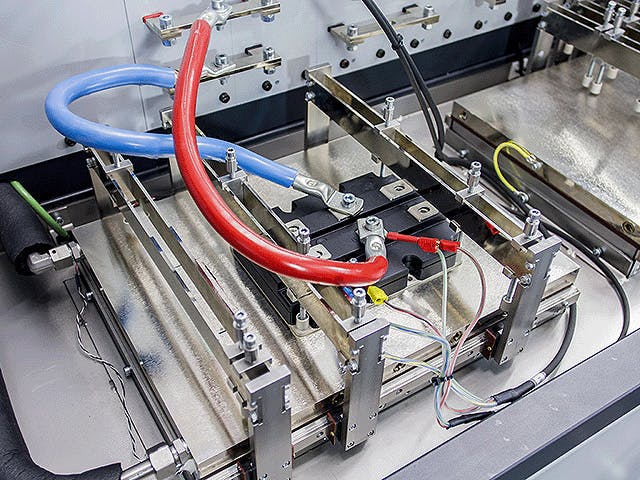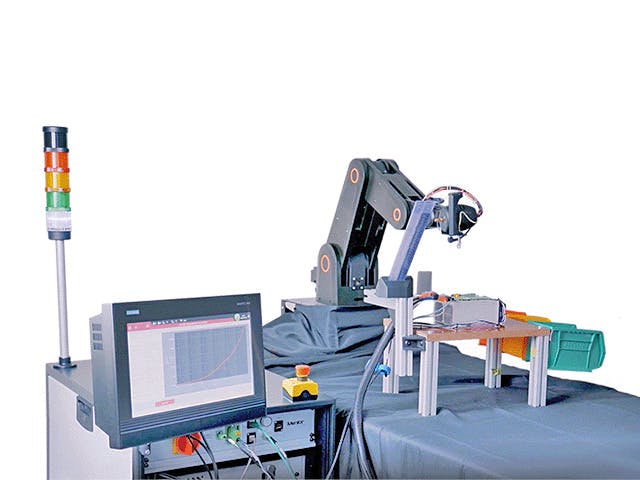Rodzina rozwiązań sprzętowych do charakteryzacji termicznej zapewnia dostawcom komponentów i systemów możliwość dokładnego i wydajnego testowania, mierzenia i charakterystyki termicznej półprzewodnikowych układów scalonych, pojedynczych i szeregowych diod LED, pakietów piętrowych i wielokostkowych, modułów energoelektronicznych, właściwości materiałów TIM oraz kompletnych systemów elektronicznych.
Nasze rozwiązania sprzętowe mierzą bezpośrednio rzeczywiste krzywe ogrzewania lub chłodzenia pakietów urządzeń półprzewodnikowych w sposób ciągły i w czasie rzeczywistym, zamiast sztucznie tworzyć je na podstawie wyników kilku indywidualnych testów. Dokonywany w ten sposób pomiar rzeczywistej termicznej reakcji w stanie nieustalonym jest znacznie bardziej wydajny i dokładny, co zwiększa dokładność pomiarów termicznych w porównaniu do metod pomiarów w stanie ustalonym. Pomiary muszą być wykonywane tylko raz na próbkę, bez powtarzania i obliczania średniej, jak w przypadku metod opartych na stanie ustalonym.
Lepszy projekt termiczny elektroniki dużej mocy oraz większa niezawodność dzięki testom i symulacji
Kompaktowy projekt niezawodnych modułów elektroniki mocy dla zastosowań takich jak elektryfikacja pojazdów, kolejnictwo, lotnictwo i konwersja mocy wymaga dokładnej oceny kwestii zarządzania ciepłem na poziomie komponentu i modułu w trakcie procesu rozwoju.
